RARE! WWI 1916 SECRET German Aerial Reconnaissance Mission Aero Squadron Photograph (MARKED) #02

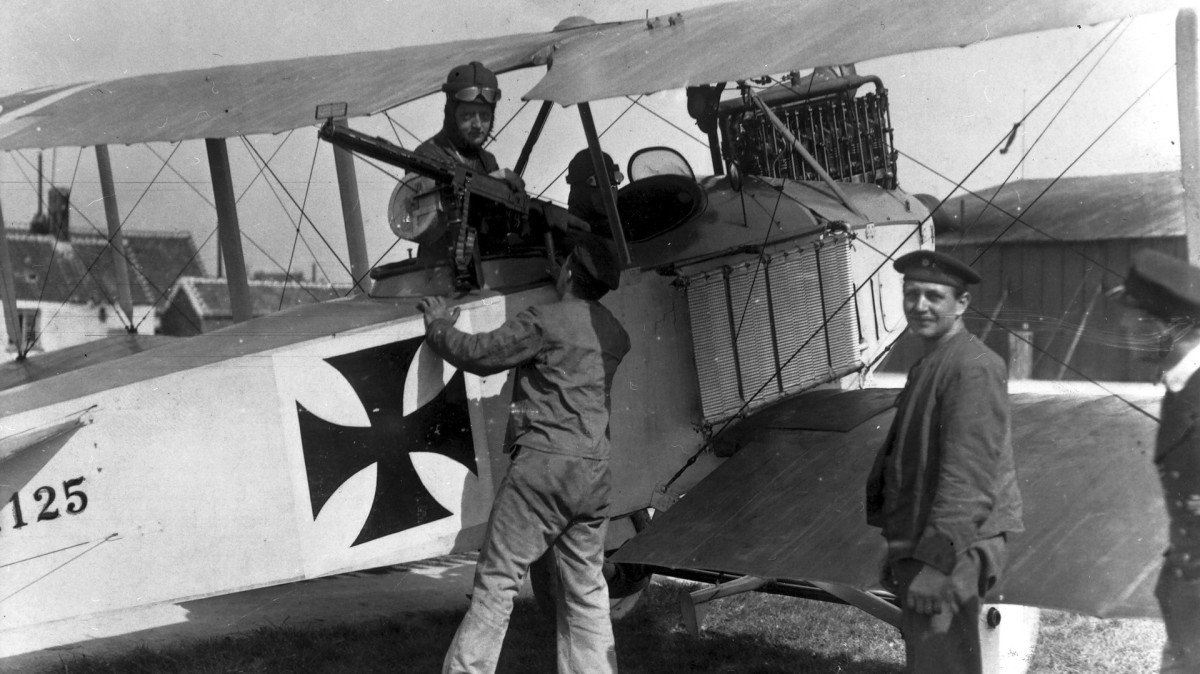
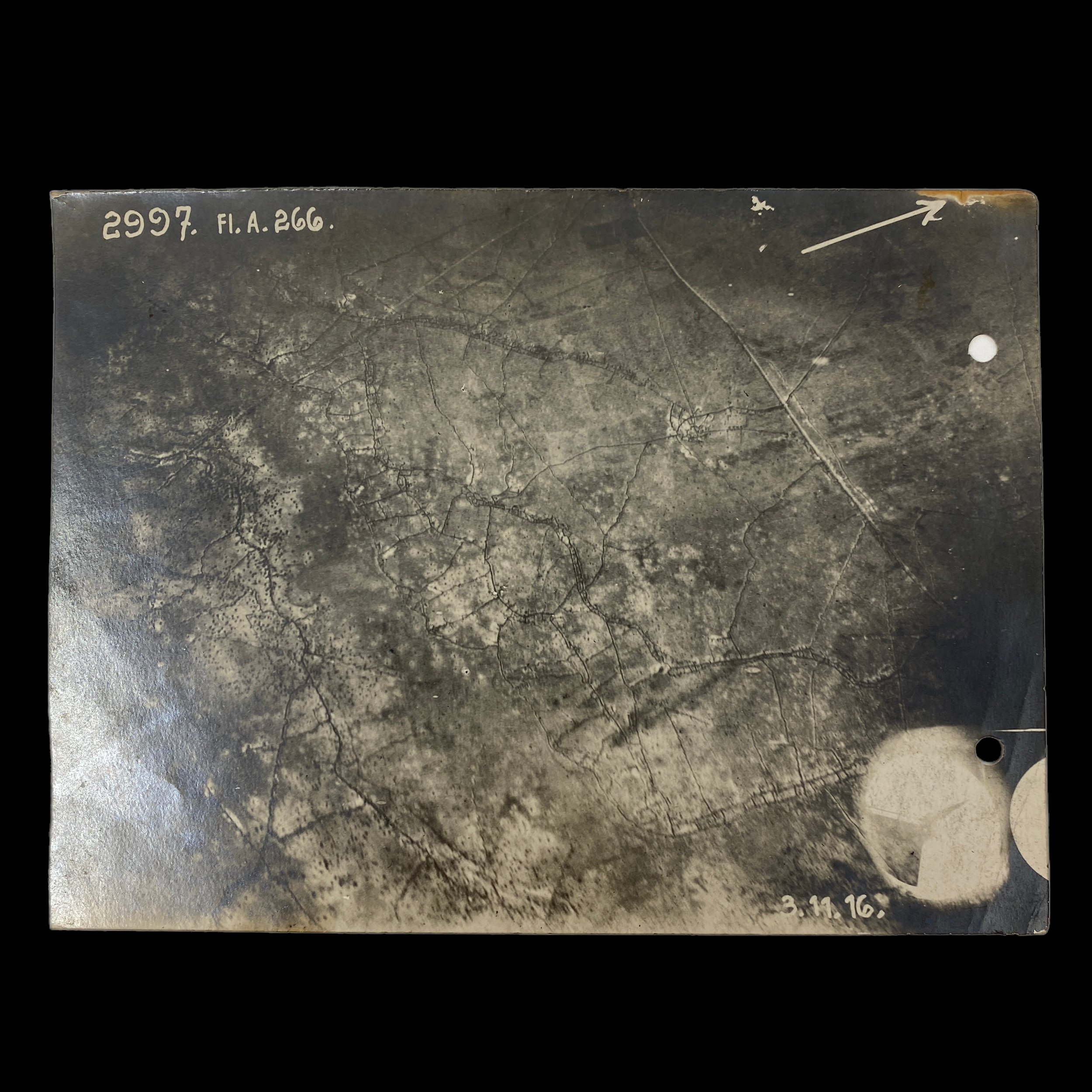
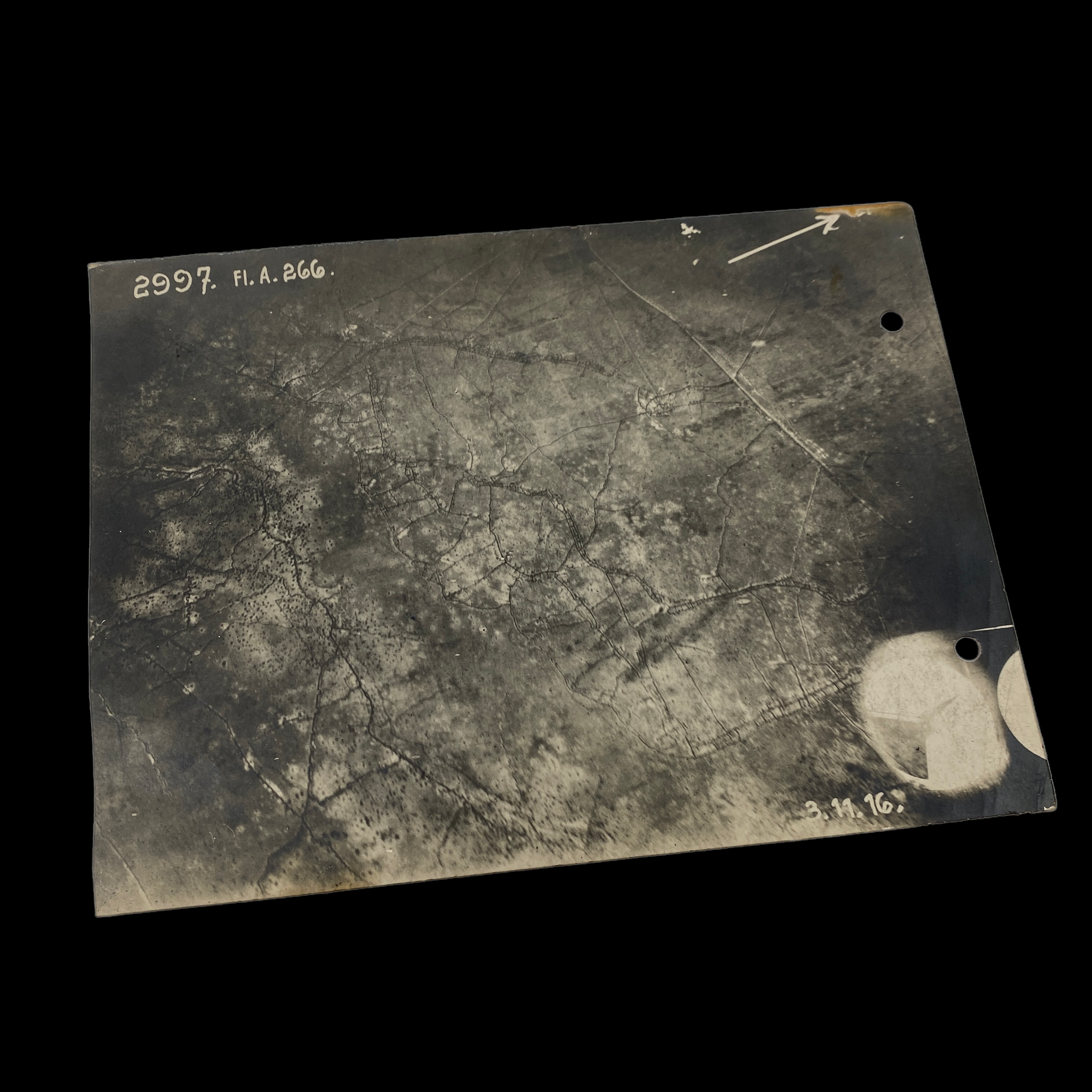

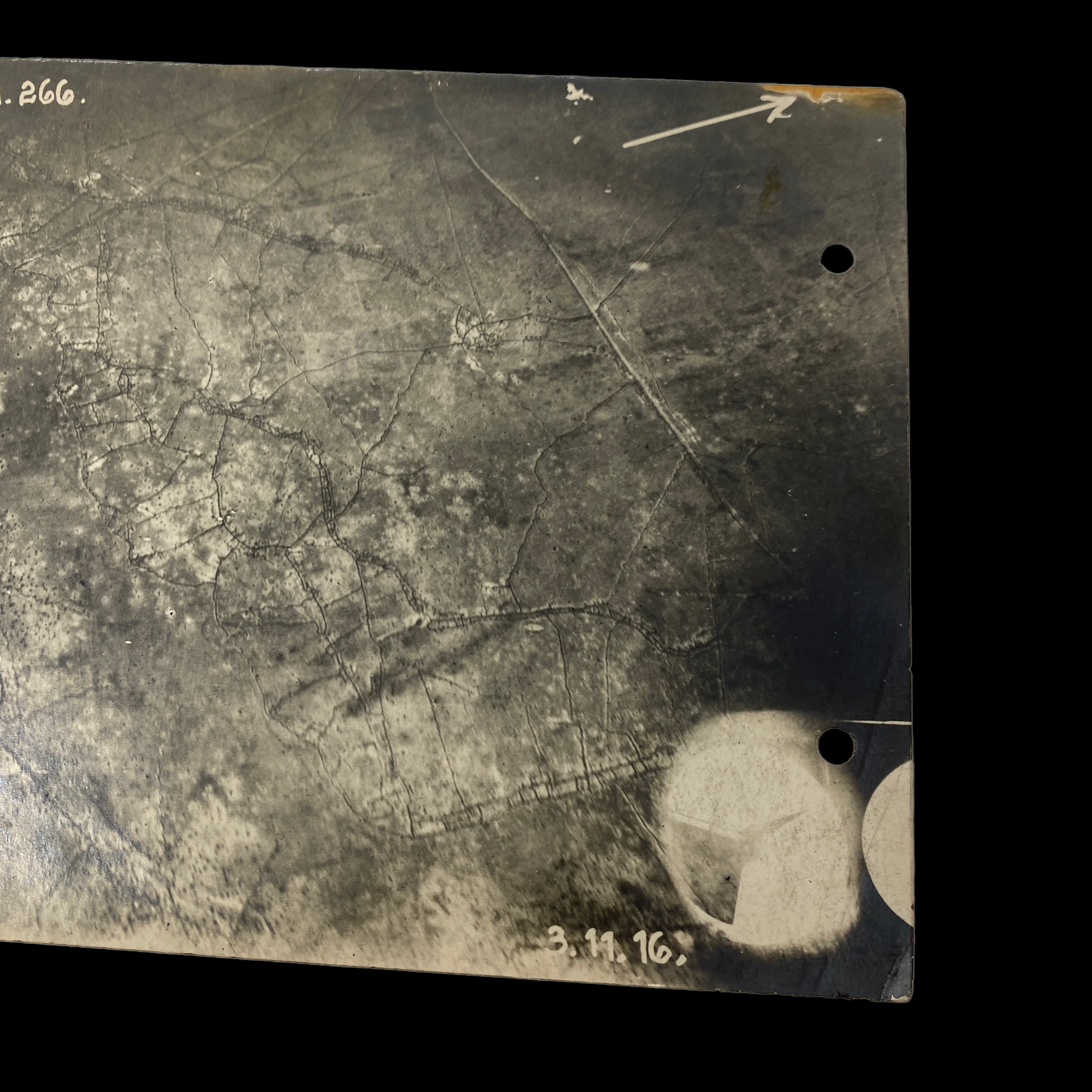
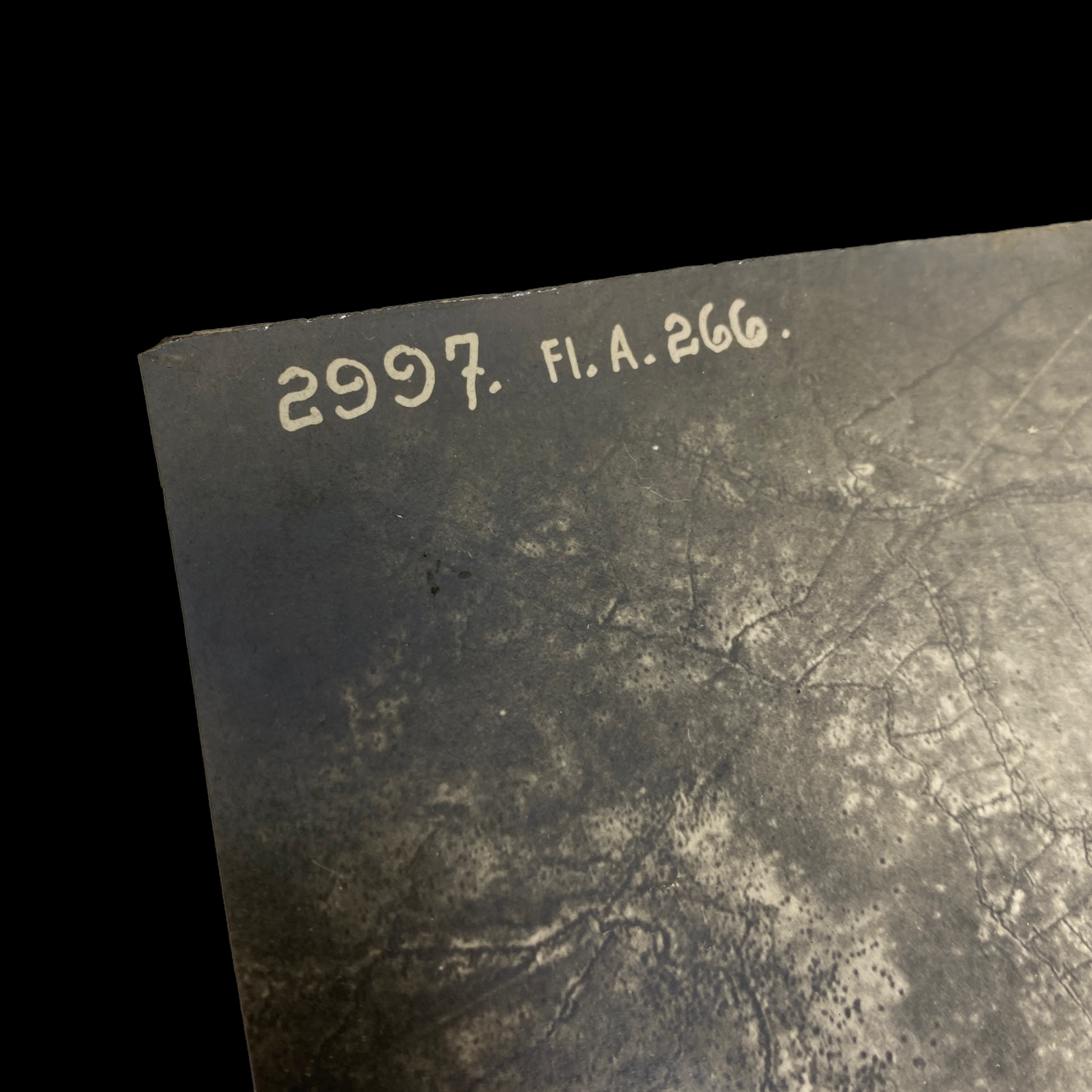
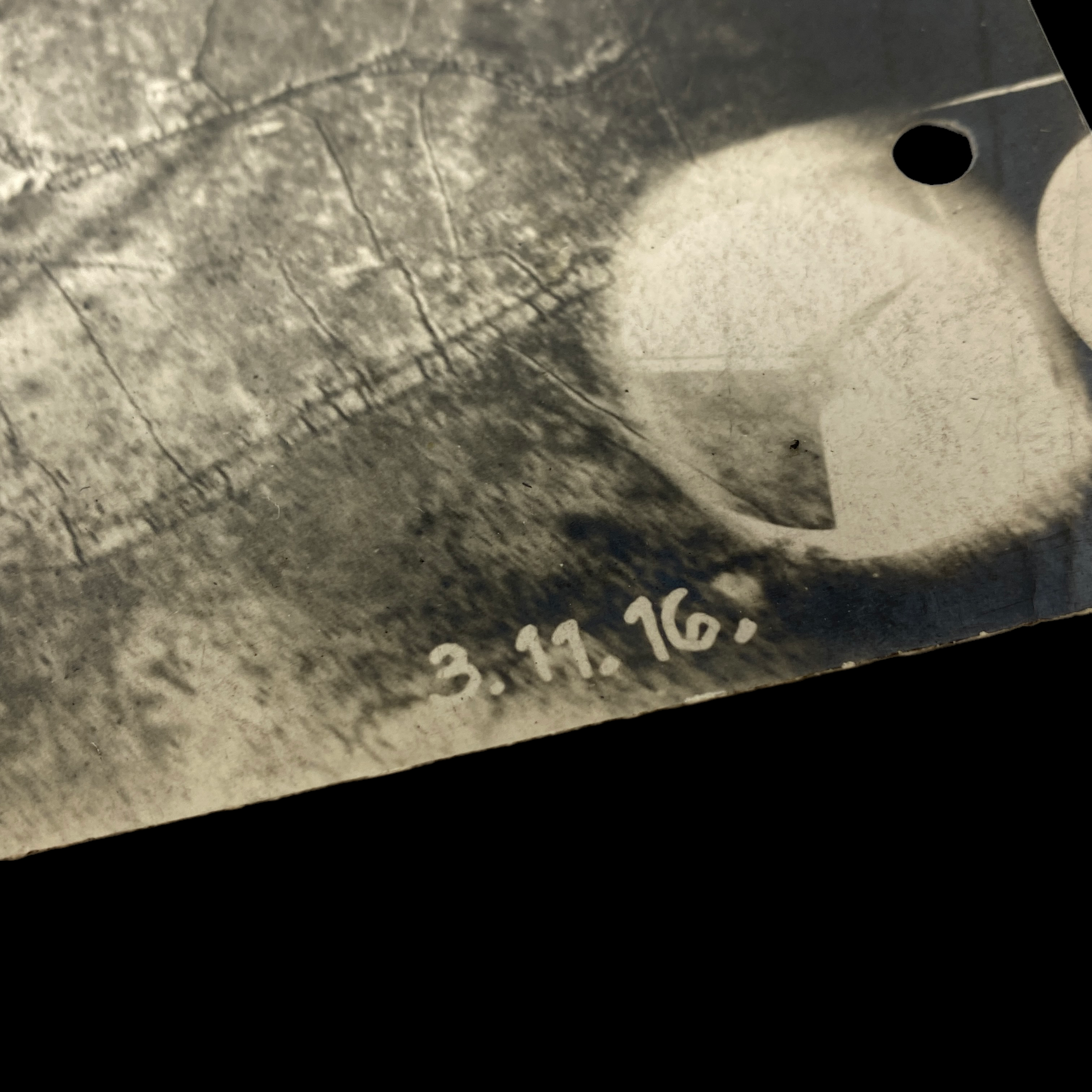
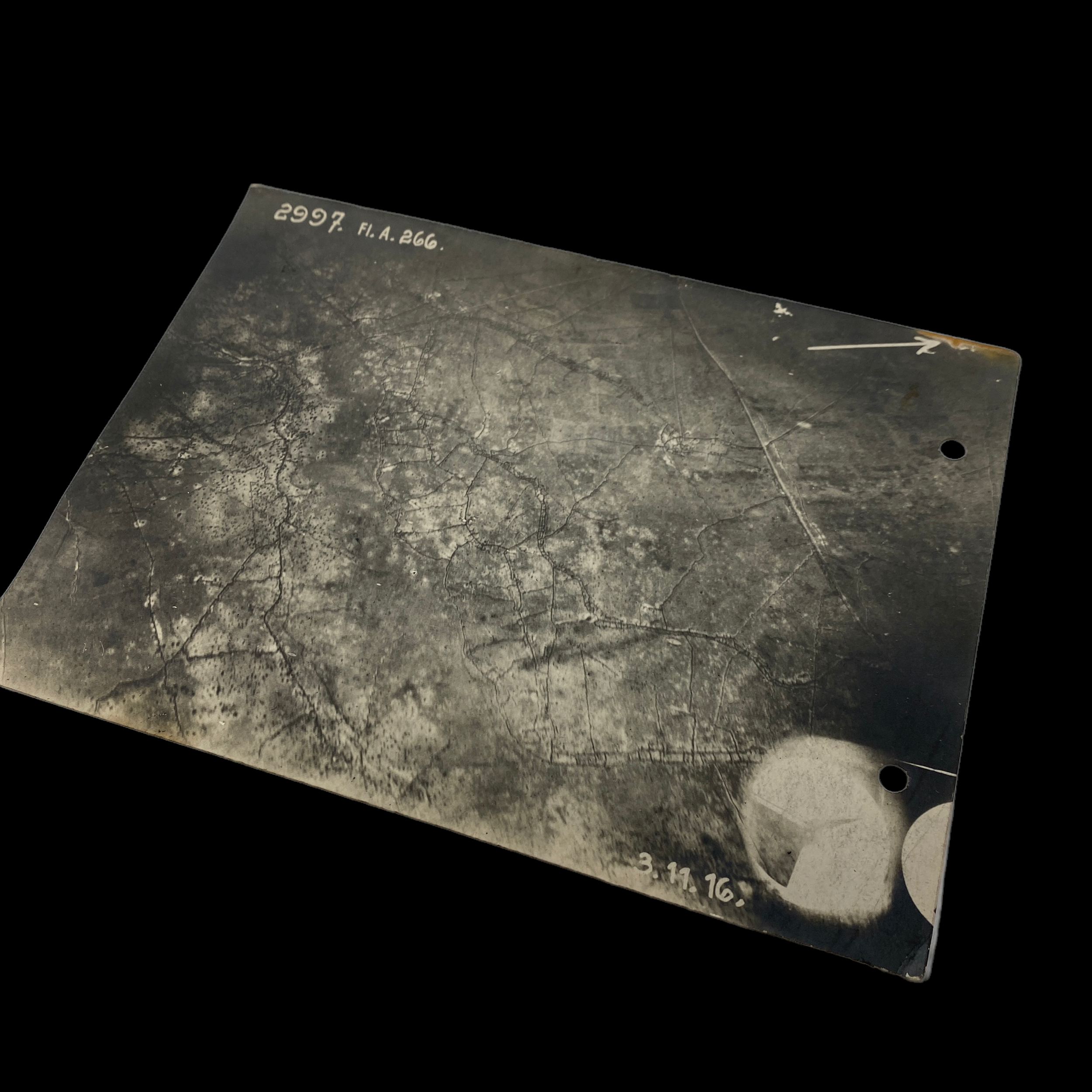

RARE! WWI 1916 SECRET German Aerial Reconnaissance Mission Aero Squadron Photograph (MARKED) #02
Comes with hand-signed C.O.A.
This rare and incredible museum-grade artifact is an original 1916 dated World War I German aerial reconnaissance frontline trench photograph marked “Geheimnis” or SECRET.
This rare original German aerial reconnaissance photograph was taken by a German aeroplane flying over frontline trenches during one of the many offensives of 1916. In this SECRET photograph, you can see detailed trenches, shelters, bunkers, emplacements, and past bombardment craters. What makes this original photograph even more incredible is the original German intelligence writing on the backside of the intelligence photograph.
When French, British and American soldiers would raid enemy trenches intelligence photographs like this would have been captured and taken as counterintelligence regarding German military knowledge of the current operation.
This was one of the first aerial reconnaissance photographs taken as these new photographic aeroplane squadrons were not in full development. This new photographic support was urgently developed soon after giving its pressing military importance and advantages. Initially requiring a full-time photographer on board to handle the heavy, awkward equipment the interpreting of aerial images was an important new speciality, essential for accurate mapping. By 1915, air-to-ground radio was in use for reconnaissance pilots.
German and other Allied pilots would be given missions for reconnaissance flights over enemy trenches. Photographs such as this one would be printed on the frontline and would be used for the most updated raid maps and intelligence updates.
Aerial Reconnaissance During WWI:
Aerial reconnaissance using heavier-than-air machines was an entirely new science that had to be improvised step-by-step. Early operations were low-level flights with the pilot often dismounting from the plane to report verbally to the nearest officers. Photographic support was urgently developed, initially requiring a full-time photographer on board to handle the heavy, awkward equipment. The interpreting of aerial images was an important new speciality, essential for accurate mapping. By 1915, air-to-ground radio was in use for reconnaissance pilots.
The leader in aeronautics at the outset was France, with its Blériot observation planes, while Germany was more advanced in optics. The British were somewhat behind in the early stages, owing to lack of government backing. America would make valuable contributions in the form of multi-lens cameras for precision spotting.
Despite the improvised start, all sides quickly learned the importance of aerial photography, and by 1916 heavier-than-air reconnaissance was a regular practice along the front. This in turn necessitated fighter escorts, and thus drove much of the rapid aeronautical progress of the four years of war. Support of ground forces was almost the sole role of reconnaissance; strategic air war concepts were as yet embryonic. At sea, lighter-than-air photography still dominated; but Zeppelins turned out to be very vulnerable over settled areas. Flying boats and seaplanes ("Hydro-aeroplanes")came into their own for coastal patrol duties. By the end of the war both sides maintained detailed maps of the front derived from mosaics of aerial photographs. Germany alone reportedly generated 4,000 images a day in 1918.